Related Research Articles
Antisemitism has increased greatly in the Arab world since the beginning of the 20th century, for several reasons: the dissolution and breakdown of the Ottoman Empire and traditional Islamic society; European influence, brought about by Western imperialism and Arab Christians; Nazi propaganda and relations between Nazi Germany and the Arab world; resentment over Jewish nationalism; the rise of Arab nationalism; and the widespread proliferation of anti-Jewish and anti-Zionist conspiracy theories.
In the 20th century, approximately 900000 Jews migrated, fled, or were expelled from Muslim-majority countries throughout Africa and Asia. Primarily a consequence of the 1948 Arab–Israeli War, the mass movement mainly transpired from 1948 to the early 1970s, with one final exodus of Iranian Jews occurring shortly after the Islamic Revolution in 1979–1980. An estimated 650000 (72%) of these Jews resettled in Israel.
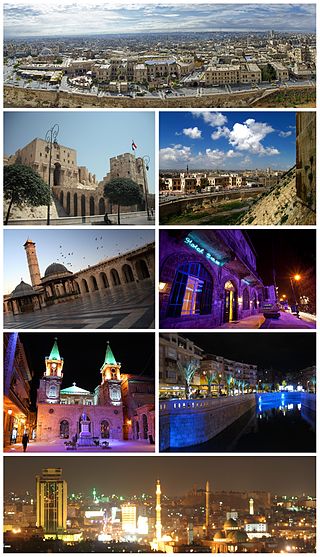
Aleppo is a city in Syria, which serves as the capital of the Aleppo Governorate, the most populous governorate of Syria. With an estimated population of 2,098,000 residents as of 2021, it was Syria's largest city until its population was surpassed by Damascus, the largest in Syria's northern governorates and also one of the largest cities in the Levant region.

The Damascus affair of 1840 refers to the arrest of several notable members of the Jewish community in Damascus on the accusation of murdering Father Thomas, a Christian monk, and his Muslim servant for the purpose of using their blood to bake matzo, an antisemitic accusation also known as the blood libel.
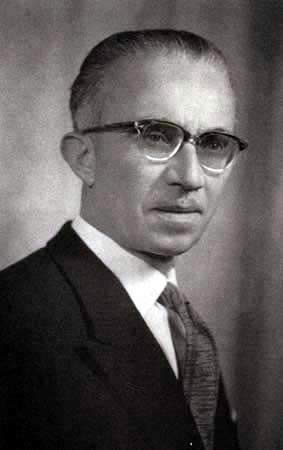
Nazim al-Qudsi, was a Syrian politician who served as President of Syria from 14 December 1961 to 8 March 1963.
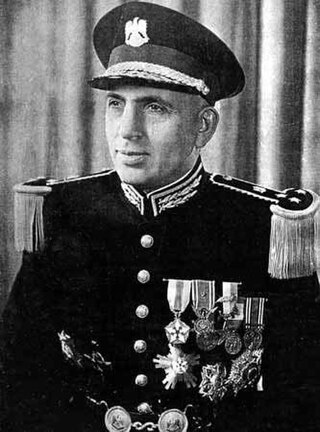
Adib al-Shishakli was a Syrian military officer who served as President of Syria from 1953 to 1954. He was overthrown and later assassinated.
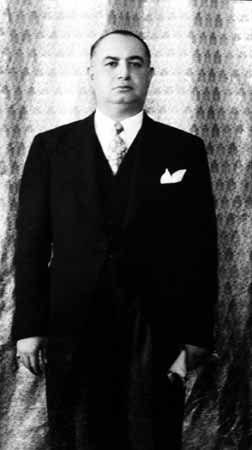
Husni al-Za'im was a Syrian Kurdish military officer and who was head of state of Syria in 1949. He had been an officer in the Ottoman Army. After France instituted its colonial mandate over Syria after the First World War, he became an officer in the French Army. After Syria's independence in 1946 he was made Chief of Staff, and was ordered to lead the Syrian Army into war with the Israeli Army in the 1948 Arab-Israeli War. The defeat of the Arab league forces in that war shook Syria and undermined confidence in the country's chaotic parliamentary democracy, allowing him to seize power in 1949. However, his reign as head of state was brief, he was tried and executed in August 1949 by his former coup co-conspirators. Al-Za'im infamously executed Lebanese intellectual Antoun Saadeh in July 1949.

Fawzi Selu (1905–1972) was a Syrian military leader, politician and the President of Syria from December 3, 1951, to July 11, 1953.

Syrian Jews are Jews who live in the region of the modern state of Syria, and their descendants born outside Syria. Syrian Jews derive their origin from two groups: from the Jews who inhabited the region of today's Syria from ancient times, and sometimes classified as Mizrahi Jews ; and from the Sephardi Jews who fled to Syria after the Alhambra Decree forced the expulsion of the Jews from Spain in 1492.

Syrian Jews had predominantly two origins: those who inhabited Syria from early times and the Sephardim who fled to Syria after the expulsion of the Jews from Spain and Portugal in 1492 CE. There were large Jewish communities in Aleppo, Damascus, and Qamishli for centuries. In the early 20th century, a large percentage of Syrian Jews immigrated to Palestine, the U.S. and Latin America. The largest Syrian-Jewish community is now located in Israel and is estimated to number 80,000.
The March 1949 Syrian coup d'état was a bloodless coup d'état that took place on 30 March, and was the first military coup in modern Syrian history which overthrew the country's democratically elected government. It was led by the Syrian Army chief of staff, Husni al-Za'im, who became President of Syria on 11 April 1949. Among the officers that assisted al-Za'im's takeover were Sami al-Hinnawi and Adib al-Shishakli, both of whom in sequence would later also become military leaders of the country. The president, Shukri al-Quwatli, was accused of purchasing inferior arms for the Syrian Army and poor leadership. He was briefly imprisoned, but then released into exile in Egypt. Syria's legislature, then called the House of Representatives, was dissolved. al-Za'im also imprisoned many political leaders, such as Munir al-Ajlani, whom he accused of conspiring to overthrow the republic.
The Jobar Synagogue was an ancient synagogue complex destroyed in May 2014. Also known as the Eliyahu Hanavi Synagogue it was situated in the village of Jobar now encompassed by the metropolitan area of the City of Damascus. It was once adjoined to a complex with rooms for the rabbi and other functionaries of the community. The synagogue was built atop a cave traditionally thought to have served the prophet Elijah in hiding. The hall center was said to be the place where Elijah anointed Elisa. During the Syrian civil war it was hit by mortar bombs, looted, and later 2/3 of the synagogue were totally destroyed at the end of May 2014.

Jobar also spelled Jawbar, Jober or Joubar, is a municipality of the Syrian capital Damascus. A once historical village on the outskirts of Damascus, it is now a suburb of the capital city. It lies 2 km northeast of the old city walls. It contains the most venerated site for Syrian Jews, an ancient 2,000-year-old synagogue and shrine in commemoration of the biblical prophet Elijah, which has been a place of Jewish pilgrimage for many centuries. Today 93% of Jobar lies in ruins due to a prolonged battle fought between the Syrian Army and various rebel groups from February 2013 to 23 March 2018. It has been the site of hostilities during Syrian Civil War, including the 2017 Jobar offensive.

The 1947 anti-Jewish riots in Aleppo were an attack on Syrian Jews in Aleppo, Syria in December 1947, following the United Nations vote in favour of partitioning Palestine. The attack, a part of an anti-Jewish wave of unrest across the Middle East and North Africa, resulted in some 75 Jews murdered and several hundred wounded. In the aftermath of the riots, half the city's Jewish population fled the city.

The 1945 Anti-Jewish riots in Tripolitania was the most violent rioting against Jews in North Africa in modern times. From November 5 to November 7, 1945, more than 140 Jews were killed and many more injured in a pogrom in British-military-controlled Tripolitania. 38 Jews were killed in Tripoli from where the riots spread. 40 were killed in Amrus, 34 in Zanzur, 7 in Tajura, 13 in Zawia and 3 in Qusabat.

Abdullah Atfeh was a Syrian career military officer who served as the first chief of staff of the Syrian Army after the country's independence.
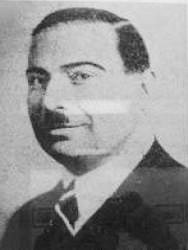
Fathallah Saqqal was a Syrian attorney, writer and government minister. He was well known for successfully arguing for Ibrahim Hananu's innocence in the French Mandatory courts in Syria regarding Hananu's participation in the Hananu Revolt between 1919 and 1921.
The Menarsha Synagogue, also known as the Great Synagogue of Damascus, is a former synagogue in Damascus, Syria completed in the 19th century. In 1949, it was the target of a terrorist attack. The building stands today, but has not been used as a synagogue since the anti-Jewish pogroms in the 1940s.
The Racqy Synagogue is a former synagogue in the Jewish Quarter of Damascus from the second half of the 19th century.
References
- 1 2 ""synagogue in the Jewish quarter of Damascus. The explosion occurred at the time when Syria was" - Google Search". www.google.com. Retrieved 2023-04-18.
- ↑ Walter P. Zenner. A global community: the Jews from Aleppo, Syria, Wayne State University Press, 2000. pg. 82. ISBN 0-8143-2791-5.
- ↑ Michael R. Fischbach. Jewish property claims against Arab countries, Columbia University Press, 2008. pg. 30. ISBN 0-231-13538-6.
- ↑ James A. Paul. Human rights in Syria, Middle East Watch. pg. 92.
- ↑ Yazīd Ṣāyigh. Armed struggle and the search for state: the Palestinian national movement, 1949-1993, Oxford University Press US, 1997. pg. 72. ISBN 0-19-829265-1.
- ↑ Itamar Leṿin. Locked Doors: The Seizure of Jewish Property in Arab Countries, Greenwood Publishing Group, 2001. pg. 175. ISBN 0-275-97134-1.
- 1 2 Joseph B. Schechtman. On wings of eagles: the plight, exodus, and homecoming of oriental Jewry, T. Yoseloff, 1961. pg. 163.
- ↑ Sami M. Moubayed. Damascus between democracy and dictatorship, University Press of America, 2007. pg. 70-71. ISBN 0-7618-1744-1.
- ↑ G. N. Giladi. Discord in Zion: conflict between Ashkenazi & Sephardi Jews in Israel Scorpion Publishing, 1990. pg. 89. ISBN 0-905906-87-X.
- ↑ The Jewish Agency's digest of press and events, Volume 3, Jewish Agency for Israel, 1950. pg. 1,080. [University of California, February 1, 2010.]